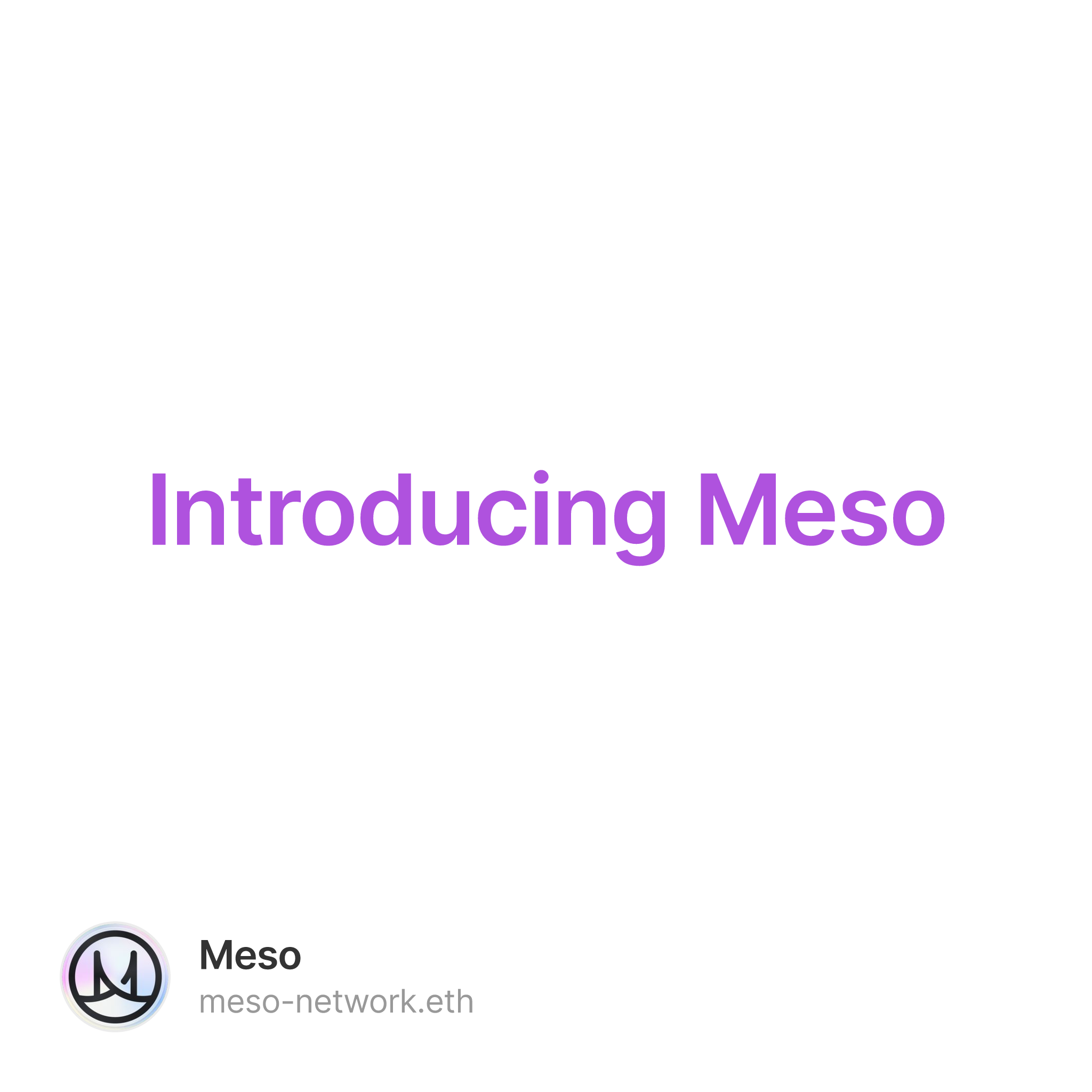Meso, the fast & safe way to move money on and off-chain.
For the last year, we’ve been building Meso, a fast and safe way to move money between your bank and self-custodial wallet.
Today most users onboard to crypto via exchanges. Exchanges offer the seamless payment experience that users expect coming from web2, with instant movement, low fees, and minimal friction. But this is only possible because users don’t have custody of their assets.
Meso’s goal is to give crypto developers access to the same seamless payment experience that exchanges have used to onboard millions of users—without sacrificing self-custody.
On-ramps are broken
The problem today is that self-custodial on-ramps are broken. Redirects, complex authentication processes, and time-consuming ID verification flows result in high levels of drop-off. If users do make it through those hurdles, they often still face payment declines in the final step. Unlike web2, where making a payment is the end point of the experience, crypto users must on-ramp to even begin onboarding to products. You don’t get very far in the ecosystem if your wallet is empty.
That’s why on-ramps are so critical for user adoption and retention. They are pivotal moments in the user experience—and they are also one of the most highly regulated. Optimizing for conversion while staying compliant is both an art and a science.
Meso’s primary goal is to improve this conversion, focusing on three core components: speed, cost, and trust.
-
Speed—Fiat payments are slow. Specialized payment platforms are necessary to move money instantly and reliably into and out of crypto.
-
Cost—Users shouldn't have to pay a hefty tax to move their own money. Fees must start low and decline even further at scale, while providers constantly innovate to keep the cost of fraud in check.
-
Trust –Transferring money between financial accounts can be nerve-racking for users. They must trust payment providers with their sensitive data and their funds, and providers must earn and keep that trust.
There are considerably more problems to confront in time. These are three of the most pressing that Meso helps solve, right out of the gate.
A New Path On- and Off-Chain
Meso’s team has deep experience building global payments infrastructure that power products like Venmo, Uber, Airbnb, and Github. Our founding team comes from early-stage engineering and product teams at Braintree, which was acquired by PayPal in 2013. We are energized by applying all we learned from this formative fintech experience to crypto and making Meso an integral piece of the ecosystem.
With our on-ramp product launch, we tackle the core conversion problems inhibiting crypto growth today. We do this by offering fast and reliable payments with instant ACH, low fees, and a trustworthy UX.
-
Instant ACH — Right now, cards and crypto don’t mix. Declines are high, and so is user frustration. Meso offers an alternative payments rail optimized for low cost and high success. We get there by owning fraud risk decisions and providing instant delivery of crypto to self-custodial wallets.
-
Low fees — With our customized crypto-specific risk engine, we’ll offer industry-leading low fees from the start. Continuously improving our fraud reduction capabilities will help drive fees even lower in the future.
-
Trustworthy UX — Our UX is meticulously designed around users’ needs at every stage. A best-in-class UI and reliable product are table stakes for Meso, but we’re not satisfied with nailing the basics. Instead, we’ve built an entire experience centered on generating trust and eliminating the pain points that we know from firsthand experience can frustrate users and limit adoption. Using message signing to verify addresses, reducing data collection, and adding innovative security protocols to keep users safe are just some of the enhanced features users can expect with Meso.
Just the Beginning
We founded Meso because of our own frustration trying to move money in and out of wallets. At launch, Meso solves many pain points associated with the on and off-ramping process, but we’re just getting started. There are many more ways to use blockchains, smart contracts, and self-custody to make fiat more compatible with crypto. We’re excited to keep exploring those possibilities alongside the wider community and build solutions that scale for all crypto users.

